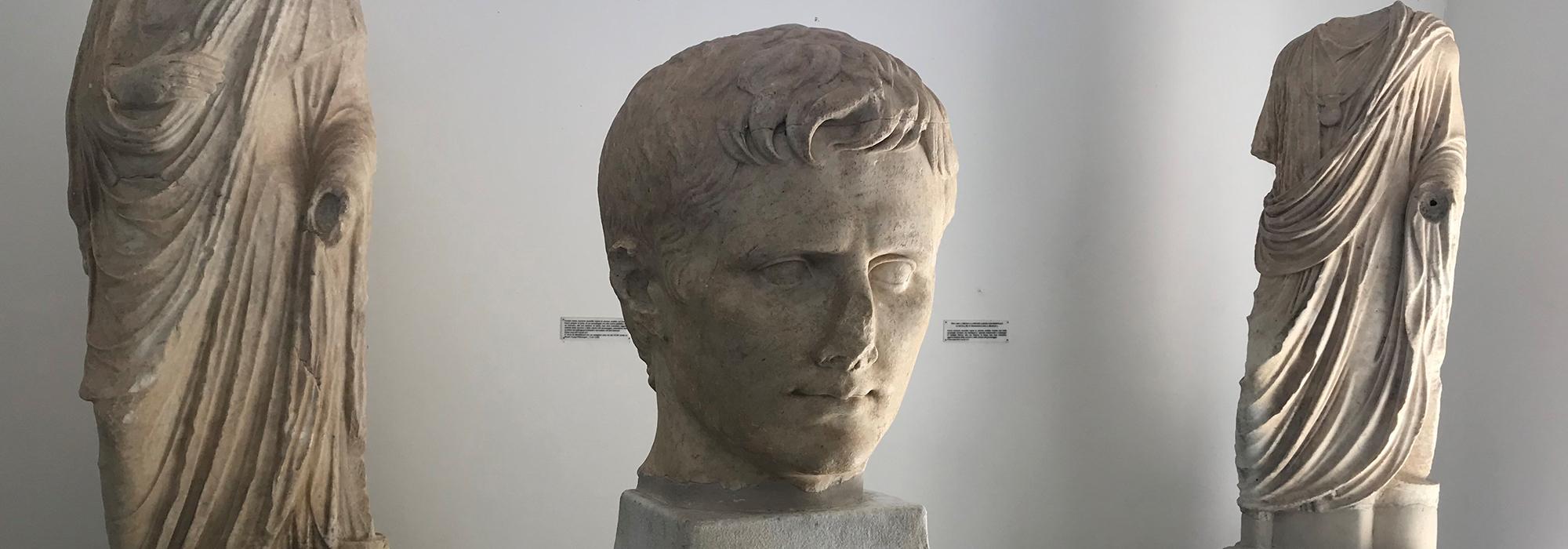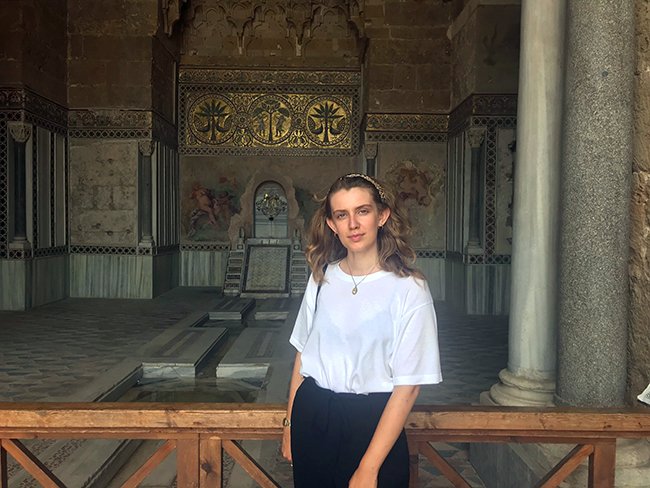
Report: A dig at the ancient settlement of Halaesa
Over the summer of 2018 Ellen Sharman used the Undergraduate Travel Grant she was awarded to travel to Sicily to be part of the team excavating an archaeological site called Halaesa.
The site itself is the ancient settlement of Halaesa, and the specific aspect our team was working on was the temple of Apollo at the very apex of the site. The dig itself was very physical, but we were educated in how to conduct an excavation to a high level properly, along with being taught how to calculate height from sea level, and to draw maps of the site. We were also taught about the history of the site and shown round its antiquarium in order to understand the history of the site we were working on.
The prospect of working on a site like this was something which appealed greatly to me due to its history as a settlement. The continuation of the settlement’s history from being under Greek control, to allying with the Romans, makes for such a rich archaeological site, as it is rare to find a settlement which lasted from the Greek period and then allied with Rome without being destroyed. This sort of unbroken settlement is something of a rarity on the island as a whole which made it such a great privilege to be part of a project with such an interesting, versatile and continued history. One of the main reasons I wanted to be a part of the excavation was to try and realise the Classical world of which I read in texts into a more physical understanding of ancient civilisations. The fact that Diodorus specifically mentions the settlement in his work, and I had the opportunity to work on the site, was exactly the sort of way in which I wanted to bring voices of antiquity to life and connect written sources to the geography of the region. Being able to experience a hint of the past settlement in a physical was an unforgettable way to visualise the spaces ancient writers have discussed. I think the scale of the dig really helped me to connect to the landscape, for it is a perfectly sized site to really develop a personal relationship to the history we are seeking to uncover and gain a better understanding of.

On the weekends Jonathan, the dig supervisor, took us to various other already-excavated sites around the island. As an expert on the epigraphy of the region, these trips proved invaluable, for he showed us and taught us about all of the most important objects discovered and displayed at the sites we visited. This term, the module I studied was Hellenistic art and architecture, and these first-hand visits to various sites across the island helped me to visualise the colonisation process of the Romans as they entered Sicily, as I saw this evidence in the archaeology of the island. Sicily’s architectural style as a whole is incredibly Hellenistic and everything I saw helped me to understand the styles and examples I was reading and writing about this term.
In terms of my linguistic skills, the trip also really helped me to improve my Italian. I studied the language to A-level and this was such an immersive way to try and help me to improve my speaking skills and refresh my memory of the language. Spending such a long period of time out there was the best way I could ever try and keep my Italian fresh in my mind. The Italian side of the team spoke very little English so I was really pushed to use my language skills and feel so grateful for the opportunity to be so immersed in the culture.
I absolutely loved being part of an intimate dig like this which really allowed me to make tangible connections to the Ancient past, and I intend to go again this summer.